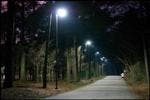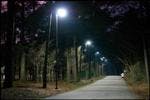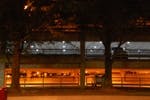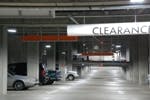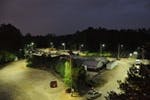This article was published in the June 2011 issue of LEDs Magazine. View the Table of Contents and download the PDF file of the complete June 2011 issue.
+++++
In LEDs Magazine, we write about LED-based lighting installations, and projected energy and maintenance savings, every week, but it’s unusual to have a case study in which solid-state lighting (SSL) has been installed for years. Raleigh, North Carolina completed its first outdoor SSL project in 2007, and positive results, including excellent lumen-maintenance performance, continue to accumulate. Moreover, Raleigh’s lengthy experience also illustrates the pace of progress in outdoor LED technology. The city’s earliest projects delivered good results while the latest projects show even better results in terms of light quality, energy savings, and payback.
The LED city
According to Howe, Raleigh has undertaken 30-35 individual SSL projects. In aggregate, Howe says the city is saving $225,000 per year on its LED projects, $175,000 of which is in energy savings. Mayor Charles Meeker has been a major LED proponent. In a recent state-of-the-city address, he said, “Our real challenge now is to take some of these pilot projects such as LED street lights and make them everyday applications.”
The city has undertaken both indoor and outdoor LED projects. Indoor examples include general and accent lighting in the city’s performing arts center, and lighting in the mayor’s office. However, there are far more examples of outdoor lighting. The city has used SSL in parking garages, to illuminate streets, parks and freeway underpasses, and as lighting for pedestrian bridges. LED up-lights and bollards have been used as landscape lighting. And the city used LEDs in an architectural application to light its convention center façade (www.ledsmagazine.com/news/5/8/27).
Raleigh’s first major LED project was in a municipal parking deck and was completed just prior to the launch of the LED City program. The city used luminaires developed by Lighting Science Group. A total of 144 70-watt LED fixtures replaced existing 188W high-pressure-sodium (HPS) fixtures.
Results from the first project
The energy and maintenance savings of the first project have been well documented over four years at this point. The city installed the LED lights on a dedicated circuit so that it could precisely measure power usage. In energy and maintenance, the LEDs have saved the city more than $13,000 per year.
After the initial installation, Raleigh also commissioned an independent public safety and security consultant to evaluate the lighting performance, and a market-research firm to study public perception of the lights. The city published positive results from both in a report that is still available on its website (http://1.usa.gov/jkS3R5). Howe remembers being surprised when the public study revealed that “the people said it was brighter and safer even though the lights cast 11% fewer lumens.”
garage was the city’s first LED project.
LED life projections
As with most LED projects, Raleigh projected the parking-garage light installation energy savings and payback period based on luminaire specifications – including lumen maintenance – and typical operating scenarios. The city expected the lights to exceed L70 for 50,000 hours of service, equivalent to 5.7 years if operated 24 hours a day. But because the garage level with the SSL retrofit was exposed to some ambient daylight, the city used a photocell to power-down some of the lights for 12 hours each day, extending the expected life to 11.4 years for those luminaires. Obviously the use of photocell control adds to the energy savings as well.
During 2010, Raleigh city workers returned and measured the light output of the LED luminaires. Howe said, “The degradation was half of what we expected.” The city’s projections relied on a linear depreciation of light output over time. There is no guarantee of the linear response. Still Howe is optimistic that the lights will last longer than expected. He said, “They may last 2 or 3 or even 5 years longer than we projected.”
convention-center parking structure.
Following its success with LEDs in the municipal parking garage, Raleigh made the decision to deploy LED lighting in an underground parking garage at its new convention center. Construction was underway on the deck when the city made the decision to utilize LED lighting. Plans had been drawn for 544 220-watt metal halide (MH) fixtures in phase one of the garage project.
To simplify the specification and implementation process, the city chose a BetaLED luminaire that was a one-for-one match for the MH luminaires in terms of light output. Ultimately the city installed 118W LED fixtures in March of 2008. There is a detailed report on the project on the LED City web site (http://bit.ly/jWPGh0). The report projected a three-year payback for the LED lights.
Maturing LED technology
Looking back, the more significant part of the story came with the second phase of the project when the city lit a second level of the garage with LEDs in August 2009. The second time around, 51W LED fixtures supplied the equivalent light of 220W MH fixtures. LEDs had advanced significantly in efficacy in 17 months.
Moreover, the fixtures use BetaLED’s modular light-bar design that hosts the individual LEDs along with the company’s NanoOptic total internal reflection (TIR) lenses to form a beam pattern (for more information on beam patterns and TIR, see www.ledsmagazine.com/features/7/9/8). According to Howe, the luminaires used in the first phase relied on five light bars to generate the required light. The luminaires in the second phase needed only two light bars – 60 fewer LEDs per fixture.
The reduction in the required number of light bars clearly illustrates the ramp in LED brightness. And the luminaires with fewer light bars will likely offer additional cost savings over the life cycle of the project.
Raleigh modeled the projects on a 15-year life cycle that will require the city to replace the LED sources at least once and probably twice over that period. The city may be able to simply replace the light bars rather than the entire fixtures. The fewer the light bars involved, the greater the savings.
LED lessons learned
Raleigh can serve as a broad example for other municipalities considering LED projects based both on the breadth of the experience gained and also on unexpected lessons learned (see Sidebar “LED lighting survives tornado”). Indeed, LEDs shine in some applications for reasons other than low power, and the maintenance savings can come from unusual circumstances. Howe said LED lights deployed in a greenway underpass have proven durable to mischievous acts by youths that had led to burst bulbs in legacy lights.
at a remote operations center.
The case for street lights is almost as strong. Howe suggested the viability for LED street lights still depends to some extent on the utility involved and the rate structure. Utilities that offer a lower rate for LED installations make the application more viable. He said that investor-owned utilities such as Progress Energy, which serves Raleigh, are being the most proactive with such rates.
Howe also stressed that Raleigh’s experience with LEDs has been very positive for the city and its citizens. He said, “We haven’t done an LED project yet that hasn’t penciled out financially.” He said every project has brought positive cash flow to the city. He also dispelled the notion that LEDs only make financial sense when grants or rebates are involved. Howe said, “We are now doing projects that are market based.”
The viability of LED lighting will only grow stronger going forward, particularly as prices of LED luminaires continue to fall. Howe offered another thought on the future. He said that energy prices will continue to rise, so energy savings attributable to LED lighting might be greater than people project when they compare light sources.
